When it comes to decorating a tiny bedroom, choosing the right wall color can make all the difference. The color you select can significantly influence the feel of the room and can help create an illusion of space or warmth, depending on what you’re aiming for. In this article, we will explore six fantastic bedroom wall colors that not only look great in small spaces but also enhance their overall ambiance. Whether you want to create a serene retreat or a cozy nest, there’s a perfect color scheme waiting for you.
1. Soft White: Crisp and Clean
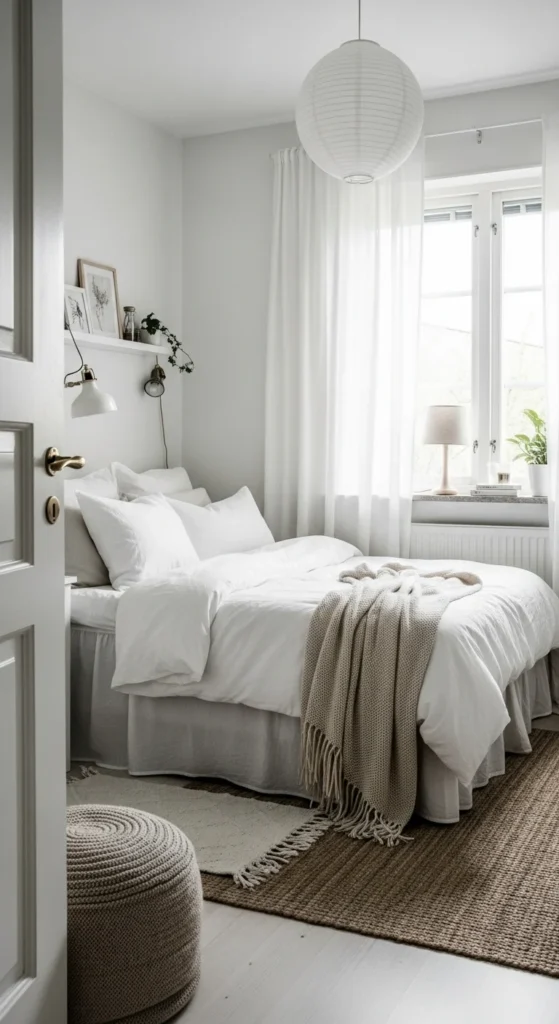
Soft white is often considered a classic choice for tiny bedrooms. This color creates a clean and airy feel, making your small space appear larger than it actually is.
Why Soft White Works
- Light Reflection: Soft white reflects natural light, brightening your bedroom and opening up the space. A well-lit room feels more expansive, which is essential when working with limited square footage.
- Versatility: This shade works well with virtually any decor style—from modern to traditional. You can easily change your bedding or accessories without worrying about clashing colors.
- A Calming Atmosphere: White has a soothing effect that can help you unwind after a long day, perfect for a sanctuary like your bedroom.
Tips for Using Soft White
- Add Textures: Since white can sometimes feel stark, consider incorporating different textures through blankets, cushions, or even a textured wallpaper feature wall.
- Contrast with Accents: Pair your soft white walls with darker furniture or colorful artwork to add depth and character to the space.
2. Pale Blue: Serene and Soothing
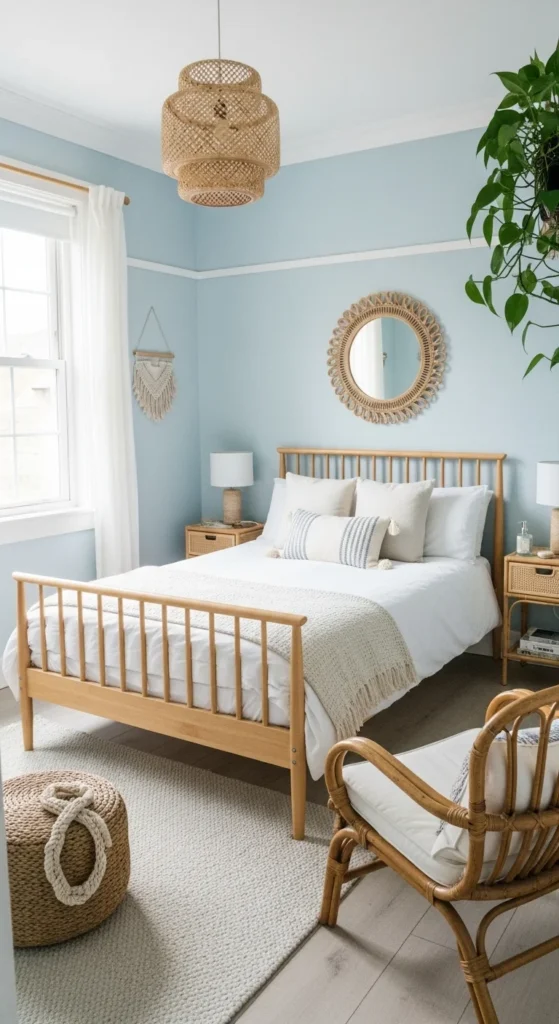
If you’re looking for a color to bring a touch of serenity into your small bedroom, pale blue is an excellent option. This soft hue mimics the sky and ocean, offering a calming effect.
Benefits of Pale Blue
- Cooling Effect: This color can make your room feel cooler during warmer months, creating a comfortable haven for sleeping.
- Promotes Relaxation: Blue is often associated with tranquility and can help reduce stress levels, making it a great color for your restful retreat.
- Visual Expansion: Lighter blues can trick the eye into perceiving more space, a fantastic factor when dealing with tight quarters.
Complementing Pale Blue
- Use White Trim: A crisp white trim can frame pale blue walls beautifully, emphasizing that airy feel and creating a clean finish.
- Incorporate Natural Elements: Combine pale blue with wooden or rattan furniture for a cozy and inviting look that is still fresh and airy.
3. Soft Yellow: Cheerful and Inviting
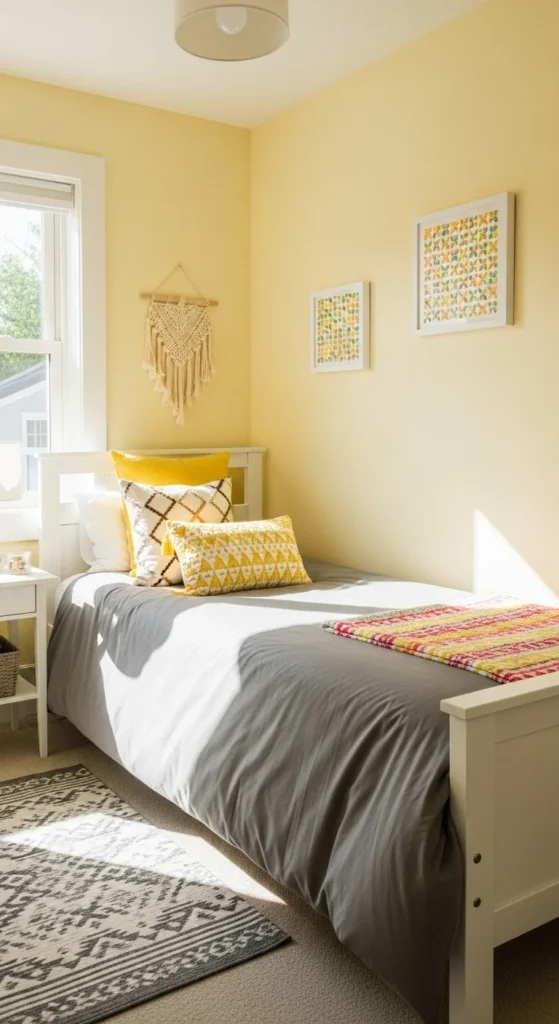
Who says small rooms can’t feel vibrant? Soft yellow is the perfect way to inject a little cheer into your bedroom while keeping it light and breezy.
What Makes Soft Yellow Ideal
- Sunshine in Your Space: This happy hue can brighten up even the gloomiest of days, making your tiny bedroom feel like a sunny retreat.
- Inviting Atmosphere: Yellow has a warm, welcoming quality that can make your small space feel more inviting, perfect for both you and your guests.
- Great for Accent Walls: If you’re worried about overwhelming a tiny space with yellow, consider using it as an accent wall against soft white or grey.
Styling with Soft Yellow
- Pair with Neutrals: Soft yellow works excellently with grey or white furniture, allowing the brightness to pop without overwhelming the space.
- Add Decorative Accents: Incorporate yellow throw pillows, curtains, or artwork to tie the color scheme together harmoniously throughout the room.
4. Soft Green: Nature-Inspired Calm
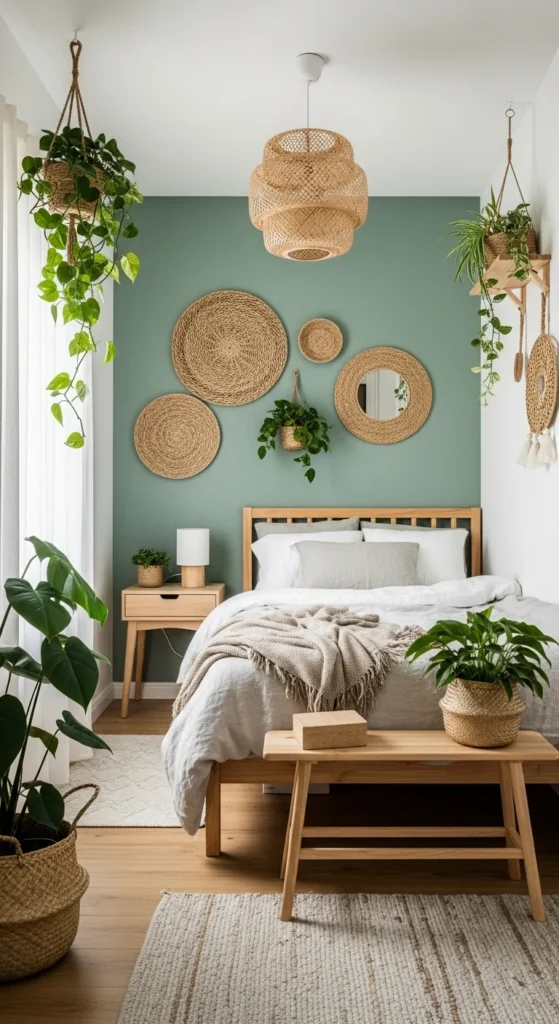
This color choice is perfect for those who want to bring the tranquility of nature indoors. Soft green hues can create a peaceful atmosphere reminiscent of a serene forest.
Why Go for Soft Green?
- Refreshing Vibe: Light greens promote a sense of relaxation and help to reduce tension, making them a great choice for a restful bedroom.
- Connection with Nature: This color instills feelings of harmony and balance, perfect if you’re looking to create a nature-inspired retreat.
- Flexibility: Similar to pale blue and soft white, softer greens can make your space feel larger while still providing a warm and inviting atmosphere.
Best Practices for Using Soft Green
- Mix with Natural Textiles: Linens, wood, and other organic materials can emphasize the calming effect of soft green.
- Accent with Darker Greens: Adding darker green plants or decor items can create a layered look that enhances the natural vibe of soft green walls.
5. Dusty Rose: A Touch of Elegance
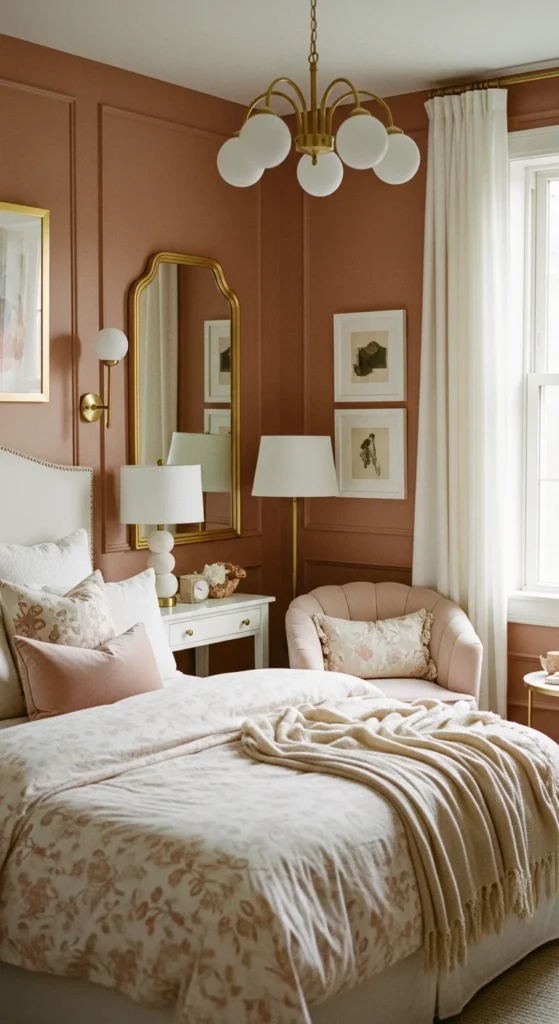
If you want something a little more sophisticated yet still soft, look no further than dusty rose. This muted pink hue adds warmth without being overwhelming.
Advantages of Dusty Rose
- Warm and Welcoming: Dusty rose brings a touch of warmth to small spaces while still maintaining a light feel, ideal for creating a cozy atmosphere.
- Romantic Touch: This elegant hue can add a romantic flair to your bedroom, making it feel more intimate.
- Easy to Accessorize: It pairs well with numerous colors, such as soft teal, cream, or even gold accents, providing versatility in decor choices.
Incorporating Dusty Rose
- Mix and Match: Use dusty rose as your wall color and play with different colored bedding or curtains that can complement or contrast beautifully.
- Add Metal Accents: Gold or brass elements can elevate the overall aesthetic, giving your tiny bedroom an upscale feel.
6. Soft Grey: Modern and Chic

If you lean towards a more modern aesthetic, soft grey can be a fantastic choice. This versatile color exudes sophistication without feeling cold.
Reasons to Choose Soft Grey
- Neutral Base: Grey provides a neutral backdrop that allows you to explore a variety of color themes with your accessories and furniture.
- Creates Depth: A soft grey can add an element of depth to your small space without making it feel cramped or closed-in.
- Timelessness: Grey is a classic color that suits various decor styles, making it an excellent choice for those who appreciate modern and minimalistic aesthetics.
Tips for Styling with Soft Grey
- Accessorize with Bold Colors: Use bold colors for your bedding and accessories to create a striking contrast against soft grey walls.
- Layer Textures: Incorporate different textures, like soft throws or patterned cushions, to add interest and visual appeal to the space.
Choosing the right wall color for a tiny bedroom is crucial to making the most of your space. Colors like soft white, pale blue, soft yellow, soft green, dusty rose, and soft grey provide you with exceptional options that promote a sense of openness and comfort. Each of these colors comes with its unique benefits, helping you create a bedroom that feels not just cozy and inviting but also visually appealing.
As you embark on your painting project, remember to consider the impact of lighting on your color choice and how different accents can enhance the atmosphere you’re trying to create. With thoughtful planning and the right shade, your tiny bedroom can become a serene retreat where you’ll love spending time. Happy decorating!
